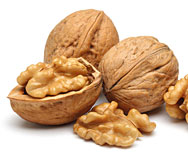Walnut on Leaf
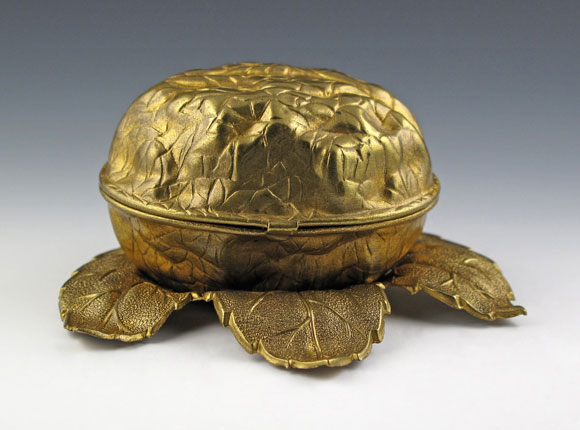
Needle Case
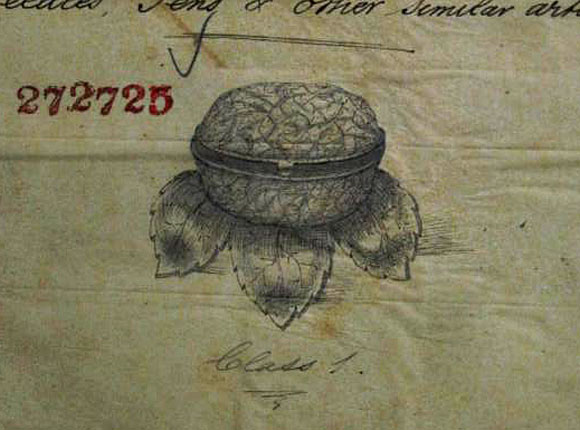
Design Representation
Design Details
Needle Case Type: |
Figural |
Patent/Registered to: |
W. Avery & Son - Redditch |
Patent/Design Representation #: |
Ornamental Class1: Metal: #272725 |
Patent/Design Registration Date: |
May 8, 1873 |
Location of Patent/Design Registration: |
The National Archives (TNA) - Kew, UK |
Reference #: |
TNA Representation - BT 43/34/272725
TNA Register - BT 44/3/272725 |
Dimensions: |
6.3 x 6.3 x 3.8 |
Material: |
Brass |
Name Variations: |
a) W. Avery & Son - Redditch
b) Copestake, Moore, Crampton & Co. - London |
Other Variations: |
Nickel-plated version
Diamond registration mark is right-side-up
Diamond registrastion mark is upside down |
Additional Photographs
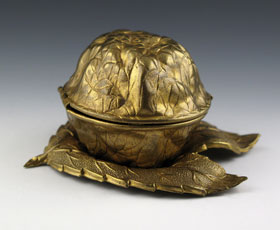
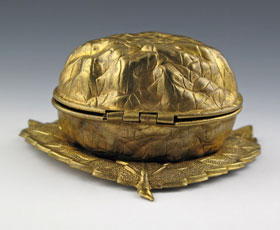
Side and back hinge views
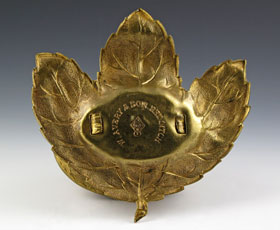
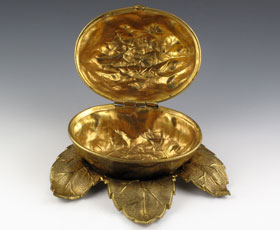
Bottom and interior views
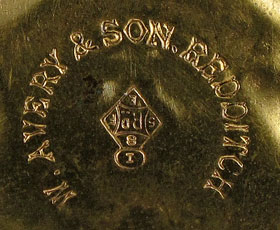
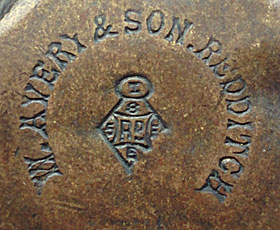
Bottom signature detail showing diamond registration mark upside down (left) and right-side-up (right photograph courtesy of Michaela Pruter). This proves two separate stamps
were used, one to impress the company name onto the leaf portion of the needle case and another to stamp the diamond registration mark onto it. Obviously the press operator sometimes
inserted the brass leaf into the stamp press upside down.
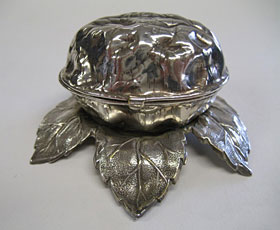
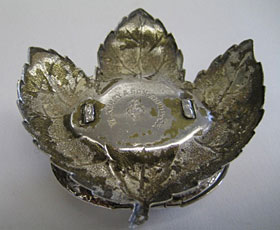
Nickel-plated version front and bottom views (photographs courtesy of Patricia Caras)
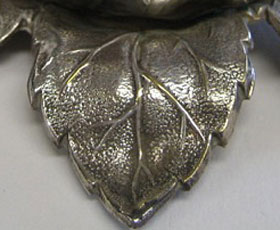
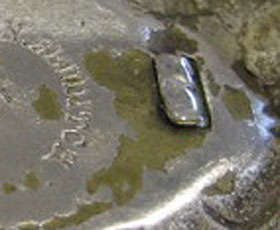
Nickel-plated version front and bottom details showing brass where plating is wearing off (photographs courtesy of Patricia Caras)
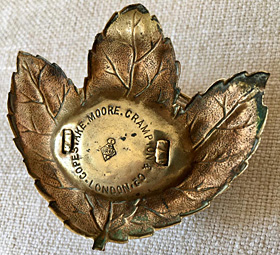
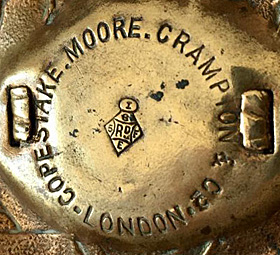
With Copestake, Moore, Crampton & Co. signature and signature detail (photographs courtesy of Victoria Stenhouse)
Facts
A walnut is a round, wrinkled two-lobed seed covered by a thin, hard and wrinkled exterior shell. They grow on trees with the English
walnut being one of the most common. Walnut seeds have valuable nutrients and are often used in cooking or are eaten straight from the shell
like other nuts. The trees that produce walnut seeds are also known for their hard, dark-brown wood which is used for making furniture,
cabinets and paneling.
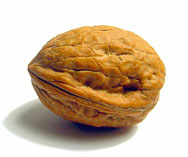
History
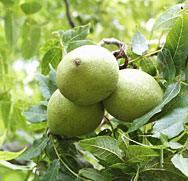
As they grow, walnuts are surrounded by tough green husks as seen in in the photograph above which resemble green apples. Once ripened,
the husks become brittle and crack open to reveal the wrinkly brown walnut shells inside. After harvesting, the husks are removed and the
walnuts are sorted by size, then stored in large cargo containers. These containers have grates which allow hot air to flow through causing the
nuts to dry. Lastly they are packaged for sale, either whole or shelled. Both walnut shaped household accessories made in brass and other
metals as well as furniture made from the wood from the walnut tree were common during the Victorian Periold.
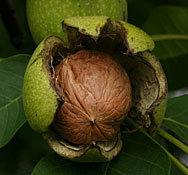
Miscellaneous
China, Iran and the USA produce 78% of the world’s walnuts. 99% of the ones grown in the USA come from the Sacramento and San Joaquin
valleys in California. Walnuts contain a significant amount of omega-3 which helps lower cholesterol. As a result, they are not only
great snacks, but are often used on salads and in many dessert recipes.
